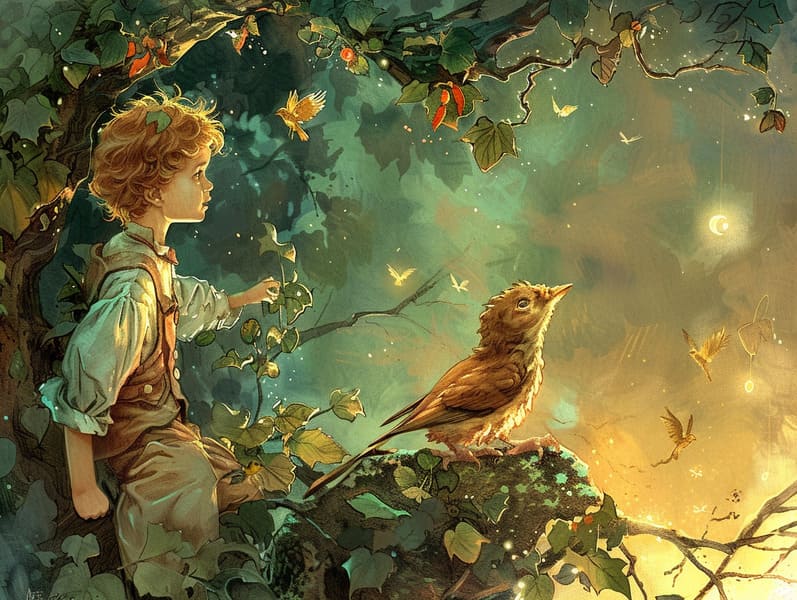
Legendary fairy tales have legendary status. These stories have been narrated from one generation to the next long before they were ever documented. They came from a variety of cultures, including Indigenous traditions. They were initially transmitted among elders, often carrying themes and messages concerning the societal norms and beliefs of the time.
Jacob and Wilhelm Grimm, Jacob and Wilhelm Grimm, were among the first to collect many of these beloved tales. Their anthology, "Grimm's Story Collection," included narratives like "Cinderella," "Little Brother and Little Sister," and "The True Story of Snow White," which have since become pillars in the world of beloved fairy tales. Similarly, Hans Andersen's whimsical tales, such as "The Story of the Little Mermaid," and "The Story of the Ugly Duckling," have captured hearts worldwide, solidifying their place in the pantheon of iconic fairy tales.
Despite their historical roots, classic fairy tales remain as meaningful as ever, especially as bedtime stories for kids. These fantastical tales are now available in diverse formats, including vibrantly illustrated books, delightful animations, and digital fairy tales.
Their lasting appeal can be connected to several enchanting factors:
Moral Lessons: Traditional fairy tales often illustrate important moral lessons. Stories like "The Wolf and the Liar" teach the importance of truthfulness, while "The Tale of the Tortoise and the Hare" exemplify the qualities of tenacity and modesty. These tales offer young ones clear distinctions between truth and falsehood, forming their moral compass in a tender yet important way.
Compassion and Insight: Timeless fairy tales frequently showcase characters facing challenges and struggles, stimulating children to feel with their struggles and boost their triumphs. For instance, "Beauty's Beast" illustrates the merit of looking deeper to know the inner spirit of a person, enhancing tenderness and awareness.
Cultural Comprehension: Many old fairy tales are imbued with the cultural contexts from which they bloomed. Learning from these tales can provide delightful insights into different societies, strengthening a sense of cultural insight and recognition.
Inventiveness and Fantasy: The fantasy-filled elements in fairy tales—mythical creatures—unleash children’s dreaming abilities. These stories bring readers to imaginary realms, inspiring fantasy ideas and a sense of mystery that remains a lifetime.
Ancient fairy tales are not only whimsical but also edifying. They serve as alluring tools in strengthening various cognitive and affective skills in kids. When fairy tales are told out loud, they improve verbal development by bringing new vocabulary and detailed sentence structures. This practice also develops hearing perception and focus, as kids concentrate deeply, excited to see what happens next.
Furthermore, talking about the themes and characters of classic fairy tales can promote evaluative skills and evaluative skills. Young ones are instructed to detect patterns, anticipate outcomes, and know cause and effect. These contemplations also benefit the young articulate their thoughts and feelings, boosting their emotional intelligence.
In today’s digital era, the proliferation of digital storybooks has made these stories more within reach than ever. Internet resources and applications give extensive collections of traditional fairy tales that can be explored or heard anytime, anywhere. Fairy tales voiced are particularly sought after, extending an interactive way for children to enjoy these delightful tales. Sound books and read-out-loud stories move characters and settings to life, often augmented by fantastical musical scores and harmonies that raise the story journey.
The timeless allure of old fairy tales more info lies in their ability to transform to today's society while continuing with their central values. Contemporary revisions of these stories often include more multicultural characters and modern settings, making them understandable to today’s audience. However, the central morals of fearlessness, understanding, and fair-mindedness remain unchanged, continuing to resonate with children of all ages.
Classic fairy tales also offer a sense of calm and closeness. They give a coherent narrative with a straightforward beginning, middle, and end, often coming to a close with the closure of conflicts and the triumph of good over evil. This dependability can be placating for little ones, allowing a sense of constancy in an always shifting world.
Traditional fairy tales continue to enchant and teach new generations, maintaining their majesty and importance in modern society. As children's night stories, they deliver up a perfect blend of fascination and comprehension, cultivating moral values, empathy, and creativity. The presence of web-based fairy tales and the in demand status of fairy tales spoken validate that these traditional narratives remain obtainable to new generations.
By upholding and sharing these narratives, we continue to acknowledge the rich tapestry of cultural heritage and cultural heritage. Whether you are seeing a vibrantly illustrated book, discovering a digital collection, or hearing an audiobook, the wonder of children's fairy tales is always within reach. These tales point out of the lasting impact of storytelling and its ability to hold us together across time and space.
No matter if you are delving into a beautifully illustrated book, discovering a web-based library, or hearing an read-aloud story, the charm of famous fairy tales is always within reach.
These tales reveal of the consistent force of storytelling and its ability to unify us across eras and regions, forming a connection that delights and instructs alike.